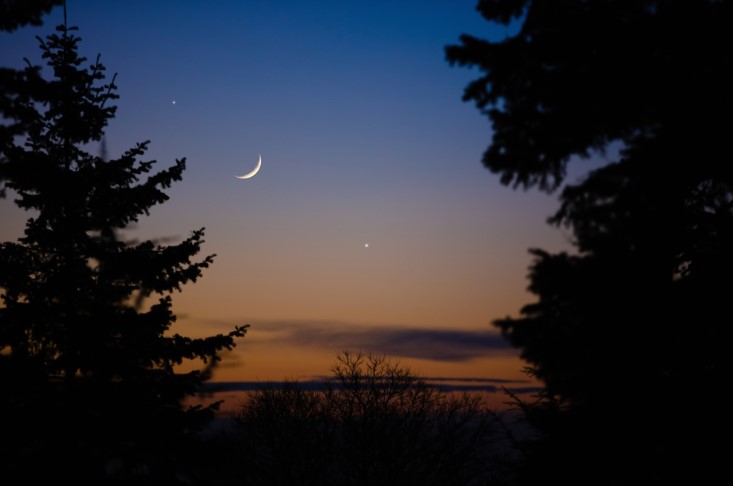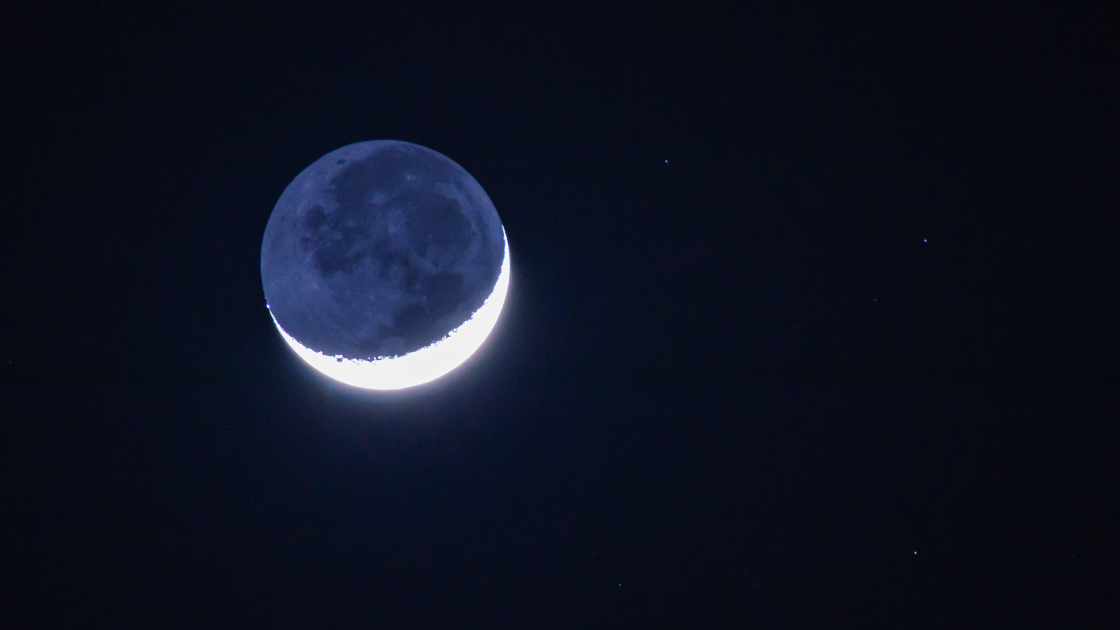The Moon-Mercury Conjunction on September 13, 2023
September 2023

The night sky has a way of reminding us of the size of the cosmos and our place within it, inspiring feelings of awe and wonder in us. On September 13, 2023, a beautiful celestial event will grace our skies: a conjunction between the Moon and Mercury. Stargazers and astronomy aficionados will be able to take advantage of this exceptional alignment to observe the delicate dance of two celestial bodies and to marvel at the wonders of our solar system. We’ll discuss the significance of this occurrence, clarify the science involved, and offer advice for viewing this spectacular cosmic encounter in this blog article.
Conjunction of the Moon and Mercury:
Conjunctions occur when two or more celestial objects appear close to each other in the sky, as observed from Earth. On September 13, 2023, the Moon and Mercury will merge into one cosmic embrace, creating a stunning visual display that demonstrates the dynamic interaction of gravitational forces and orbits within our solar system.
The positions of the two objects at the moment of conjunction will be as follows:
| Object | Right Ascension | Declination | Constellation | Magnitude | Angular Size |
| The Moon | 10h36m10s | +13°01′ | Leo | -8.1 | 29’25″7 |
| Mercury | 10h36m10s | +07°02′ | Leo | 2.0 | 9″2 |
The Science Behind the Conjunction:
Mercury, the innermost planet of our solar system, orbits the Sun at a much closer distance than Earth. Since it frequently looks close to the Sun from our perspective point due to its rapid orbit, it can be difficult to identify in the night sky. However, during a conjunction, Mercury aligns with other celestial bodies, like the Moon in this case, and becomes briefly visible during twilight.
Observing the Cosmic Dance:
Whether you’re an amateur astronomer or just have a passing interest in the cosmos, seeing the conjunction of the Moon and Mercury may be a wonderful experience. Here are some suggestions to improve your viewing pleasure:
Find an Open Sky: Look for a location with a clear, unobstructed view of the horizon. A spot away from tall buildings and trees will allow you to see the celestial pairing as they emerge above the horizon.
Time Your Observation: The conjunction will occur during twilight, shortly after sunset. Check local sunset times to plan your observation accordingly. Mercury might appear faint, so early viewing is recommended.
Use Binoculars: Mercury’s proximity to the Sun can make it challenging to spot with the naked eye alone. Binoculars can help bring out its subtle glow and make the conjunction easier to locate.
Moon as a Guide: The waxing crescent Moon will act as a convenient guide to locating Mercury. Look for the Moon first, and then direct your gaze slightly to the lower left to spot the planet.
Capture the Moment: If you’re interested in photography, consider capturing the conjunction with your camera. Experiment with exposure settings to highlight the details of both the Moon and Mercury.
The elaborate dance that takes place in the cosmos is reminded by the cosmic ballet of the planets and stars. The Moon and Mercury will be in close proximity on September 13, 2023, providing us with a thrilling opportunity to observe this dance and the celestial treasures that adorn our night skies. Don’t miss your chance to see the harmony between two of our solar system’s most alluring inhabitants, whether you’re an experienced astronomer or just interested about the wonders of space.






